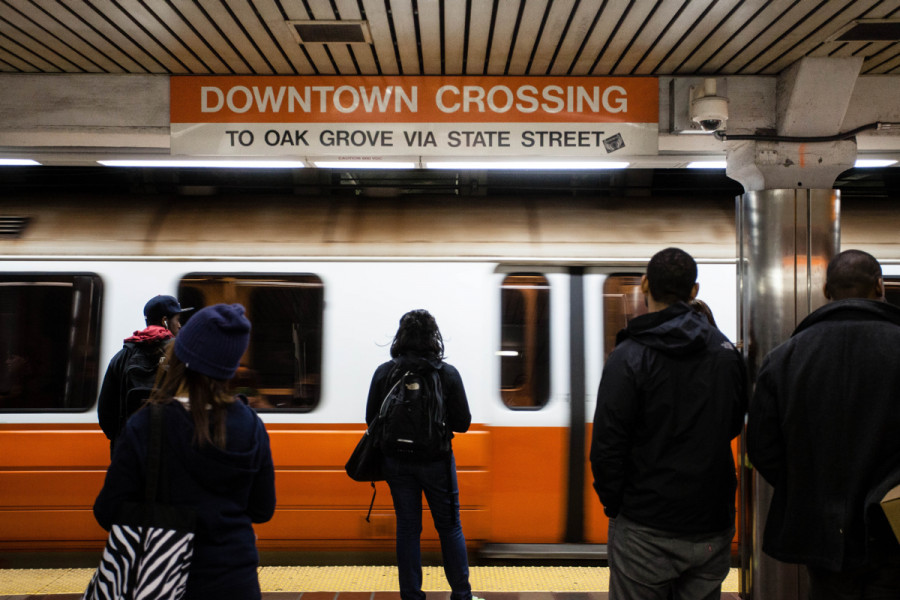The MBTA Is 97 Percent On Time, According to the New York Times
Its report on the New York subway system had some surprising news about Boston.

Photo by Alex Lau
The New York Times’ deep dive into the many failures of the New York subway system, which was published this weekend, turned up some shocking data points. For one, we’ve learned that subway operators in the city are earning an average of $170,000 in total compensation, and that administrators are taking home an average of about $280,000.
It was a sweeping, extensively researched piece that outlined the mismanagement and waste that made New York’s subway system the mess it apparently is today.
But perhaps the most shocking bit of information, at least for readers in Boston and other cities, came in this chart tracking “on-time performance” for the largest rapid transit systems. According to the Times, Boston trains were on time a stunning 97 percent of the time. That’s 97 percent, as in, an A-plus!
New York’s subway system’s rate was an abysmal 65 percent, the worst in the world.

Screenshot via the New York Times
Boston commuters were baffled, and even the MBTA was confused. “It’s unclear how they arrived at that figure,” spokesman Joe Pesaturo wrote in an email. Numbers on the T’s online Performance Dashboard were much less rosy, showing a “reliability” rating of 88 percent for the last 30 days.
Even after facing a heap of backlash from Boston and elsewhere, though, the Times is standing by its methodology.
“I’ve gotten a lot of questions from readers about the ‘on-time performance’ stats used in our story,” says Times reporter Brian M. Rosenthal, reached on Twitter. “Frankly, a lot of people in other cities, especially Boston and Washington, D.C., do not believe that their system is nearly as good as the stat we used.”
How did they get those stats?
Rosenthal explains that when the Times reporters analyzed data provided to it by the MBTA and other transit agencies, they defined a train as being on time if it did not show up more than five minutes late. So, by that metric, even subway systems with chronically late trains could get a sterling rating, so long as the trains did not routinely show up six or more minutes after they were supposed to.
“This is an industry standard,” Rosenthal says. It is also, he says, pretty lax. “The fact that New York’s subway is still so low on a metric like that is an indication that things really are bad right now in New York.”
Measuring on-time performance for subways is complex and controversial. The Massachusetts Public Interest Research Group disputes even the MBTA dashboard’s 88 percent figure, arguing that the agency’s methodology doesn’t closely enough resemble reality. A train has arrived reliably, according to the T, if a passenger who arrives at a station does not have to wait longer than a predetermined “headway” period (say, 5 minutes at rush hour) to board a train. That can mean subway trains are not counted as late, even if they are. The Boston Globe explored this problem in October, and found that the T’s method for gauging performance is but one of many. If it only counted as “on time” the trains that arrived within a minute of their scheduled arrival, the MBTA’s ratio of reliable train arrivals would be “between 69 percent and 81 percent,” the Globe found.
So is the T really on-time 97 percent of the time?
It depends on who you ask.


